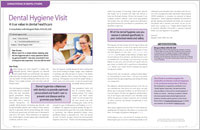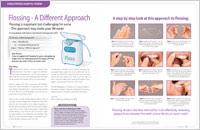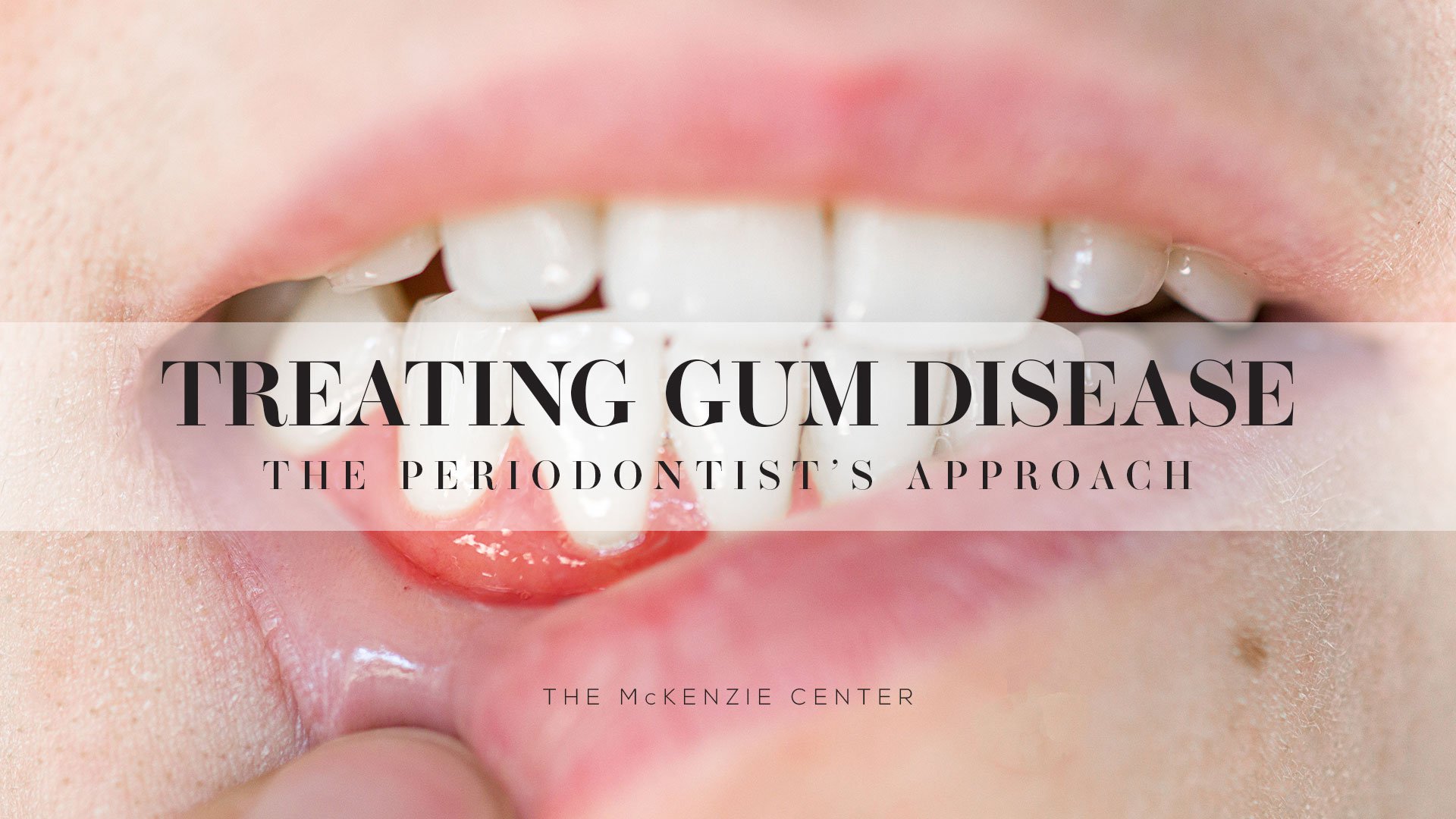If you have gum disease, your dentist may refer you to a periodontist, a specialist in treating gum disease or gingivitis. A periodontist has advanced training in diagnosing and managing periodontal disease.
A more advanced gum disease that has spread to the bone is called periodontitis. Treatment of gum disease is vital since research shows that the health of your gums can affect your health. For example, research links gum disease with a higher risk of cardiovascular disease in men. When your gums are inflamed by gum disease, it can affect your blood vessels and heart.
Risk Factors for Gum Disease
One of the strongest risk factors for gingivitis and periodontitis is poor dental hygiene. If you don't regularly clean and floss your teeth to remove plaque, the plaque may build up and cause gum inflammation. Genetics is also a factor. If you have relatives with gum disease, you may also be at higher risk. Age is also a factor. Gingivitis and periodontal disease become more prevalent with age. One study found that these conditions are also more common in people of shorter stature for unknown reasons.
Symptoms of Gum Disease
It's important to be aware of the signs and symptoms of gingivitis. If you catch the symptoms early, before there's bone involvement, the condition is reversible.
The most common symptoms of gum disease include:
Gum swelling, tenderness, or redness
Bleeding when brushing or flossing
Bad breath
Teeth that are moving or no longer fit together properly
Receding gums (teeth appear longer)
Loose teeth (usually in advanced stages)
If you have any of the above, consult your dentist immediately. If you have significant gum disease, they may refer you to a periodontitis for treatment.
If you ignore the symptoms, the inflammation can move deeper and damage the ligaments and bones that hold your teeth in place.
How a Periodontist Treats Gum Disease
The first step a periodontist will take is to determine how severe your gum disease is. If only the gums are inflamed, you can often reverse the problem with oral hygiene measures. If more severe, infection and inflammation can spread to the bones in your jaw.
If the bone is involved, it's likely not reversible, but a periodontist can manage the symptoms of mild periodontal disease using a process called scaling to remove tartar beneath the gum line. Root planing smooths the rough surface of the root of your teeth, making it harder for bacteria to stick and cause inflammation and infection.
For severe periodontal disease, where the infection is deep in the gums and into the bone, you may need surgery to avoid losing one or more of your teeth. One such procedure, gum flap surgery, is where the periodontist makes an incision in the gums and pulls the tissue back to clean beneath the gums. Once they have completed the cleaning, they suture the tissue back into place.
In some cases, they may recommend gum or bone grafts to areas where the gums are receding or to reinforce the bones. Also available are procedures for regenerating tissue using proteins that stimulate tissue growth.
A newer treatment is laser targeting areas of gum disease. The advantage is this approach requires less recovery time, but there's no evidence that this approach is superior to the conventional surgical approach. It's best to talk to your periodontist about all the options and which is right for you.
Therapy is better than other gum disease therapy forms. It would help if you spoke with your dentist about all available therapy options. It's always best to err on the side of caution with dental decisions.
Good Dental Hygiene Matters
Practicing good dental hygiene lowers your risk for periodontitis, and after treatment, you must maintain excellent hygiene to prevent a recurrence.
References:
Grau AJ, Becher H, Ziegler CM, Lichy C, Buggle F, Kaiser C, Lutz R, Bültmann S, Preusch M, Dörfer CE. Periodontal disease as a risk factor for ischemic stroke. Stroke. 2004 Feb;35(2):496-501. doi: 10.1161/01.STR.0000110789.20526.9D. Epub 2004 Jan 5. PMID: 14707235.
Erchick, D.J., Rai, B., Agrawal, N.K. et al. Oral hygiene, prevalence of gingivitis, and associated risk factors among pregnant women in Sarlahi District, Nepal. BMC Oral Health 19, 2 (2019). doi.org/10.1186/s12903-018-0681-5.
"Periodontitis - Diagnosis and treatment - Mayo Clinic." 14 Feb. 2020, mayoclinic.org/diseases-conditions/periodontitis/diagnosis-treatment/drc-20354479.
"Successful Treatments For Advanced Periodontal Disease." colgate.com/en-us/oral-health/gum-disease/successful-treatments-for-advanced-periodontal-disease.
Related Oral Hygiene Articles
 Oral Hygiene – Dental Health for Life
Oral Hygiene – Dental Health for Life
The best tools for maintaining your oral health and minimizing dental problems are a quality toothbrush, toothpaste, a roll of dental floss, approved mouthwash and good diet. Unfortunately, myths and folklore abound on how and what to use to best effect. This article cuts through the confusion with a winning game plan for oral health...
Read Article
 Dental Hygiene Visit
Dental Hygiene Visit
Each dental hygiene visit begins by reviewing your health history to identify issues that may necessitate special precautions during dental hygiene care to ensure your safety and to prevent medical emergencies...
Read Article
 Flossing - A Different Approach
Flossing - A Different Approach
Flossing is important but challenging for some - this approach may make your life easier! Research suggests that while most people will habitually brush their teeth, developing a flossing habit is still a bit more difficult. Flossing however, remains the best method for most effectively removing plaque from between the teeth where the brush won't reach...
Read Article


